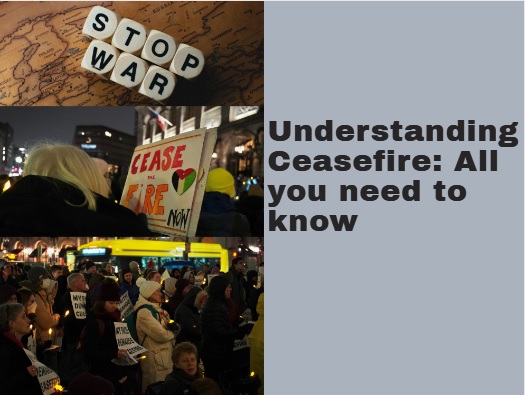Understanding Ceasefire: All you need to know
What Is a Ceasefire?
A ceasefire is when two or more groups involved in a conflict agree to stop fighting for a while. Think of it like a timeout in a sports game—everyone pauses to cool down, talk, and maybe find a solution. Ceasefires can be temporary or last longer, depending on the situation.
Why Do Ceasefires Happen?
Ceasefires are used to:
- Stop violence: Give people a break from fighting.
- Allow aid: Let food, medicine, and help reach those in need.
- Start talks: Create a chance for leaders to discuss peace.
How Is “Ceasefire” Used in Different Languages?
- English: “The two countries agreed to a ceasefire to help the peace talks.”
- Urdu: “دونوں ملکوں نے امن مذاکرات میں مدد کے لیے جنگ بندی پر اتفاق کیا۔”
- Hindi: “दोनों देशों ने शांति वार्ता में मदद के लिए युद्धविराम पर सहमति जताई।”
- Bengali: “দুটি দেশ শান্তি আলোচনায় সহায়তার জন্য যুদ্ধবিরতির উপর সম্মত হয়েছে।”
- Tamil: “இரு நாடுகள் அமைதி பேச்சுவார்த்தைகளுக்கு உதவுவதற்காக போர் நிறுத்தத்தில் ஒப்புக்கொண்டன.”(English-Bengali)
What Does “Against Ceasefire” Mean?
Being “against ceasefire” means refusing to stop fighting. This can happen if one side doesn’t trust the other or thinks they can win by continuing the fight.
Ceasefire in War
In war, a ceasefire is a temporary stop to the fighting. It’s not the end of the war but a chance to:
- Talk about peace.
- Help people affected by the war.
- Prevent more harm.
Translations of “Ceasefire” in Various Languages:
-
English: “Ceasefire” refers to a suspension of active hostilities.
-
Urdu: “جنگ بندی” (Jang Bandi) denotes a temporary stoppage of war.
-
Hindi: “युद्धविराम” (Yudhviram) signifies a break in active combat.
-
Bengali: “যুদ্ধবিরতি” (Juddho Birati) indicates a pause in fighting.
-
Tamil: “போர்காலம் நிறுத்தம்” (Porkaalam Niruththam) refers to a cessation of war activities.Merriam-Webster
Key Concepts Related to Ceasefire:
-
Against Ceasefire: Refers to opposition or refusal to halt hostilities.
-
Lifting a Ceasefire: The act of ending a previously agreed-upon pause in fighting.
-
Ceasefire in War: A temporary suspension of combat, often as a precursor to peace negotiations.
Understanding the concept of ceasefire and its significance in conflict resolution is essential for promoting peace and stability in conflict-affected regions.
What Does “Lifting a Ceasefire” Mean?
“Lifting a ceasefire” means ending the pause in fighting. This can happen if the reasons for stopping the fight are no longer needed or if talks fail.
Real-Life Examples of Ceasefires
- World War I: Soldiers on both sides stopped fighting on Christmas Eve 1914 and celebrated together.
- Israel and Lebanon: In November 2024, they agreed to a 60-day ceasefire to stop fighting and start peace talks.
- Ukraine Conflict: In 2025, leaders discussed a ceasefire to end fighting and help civilians. (Wikipedia)
Conclusion
A ceasefire is an important tool in stopping violence and starting peace. It shows that even in difficult times, people can choose to pause, talk, and work towards a better future.
